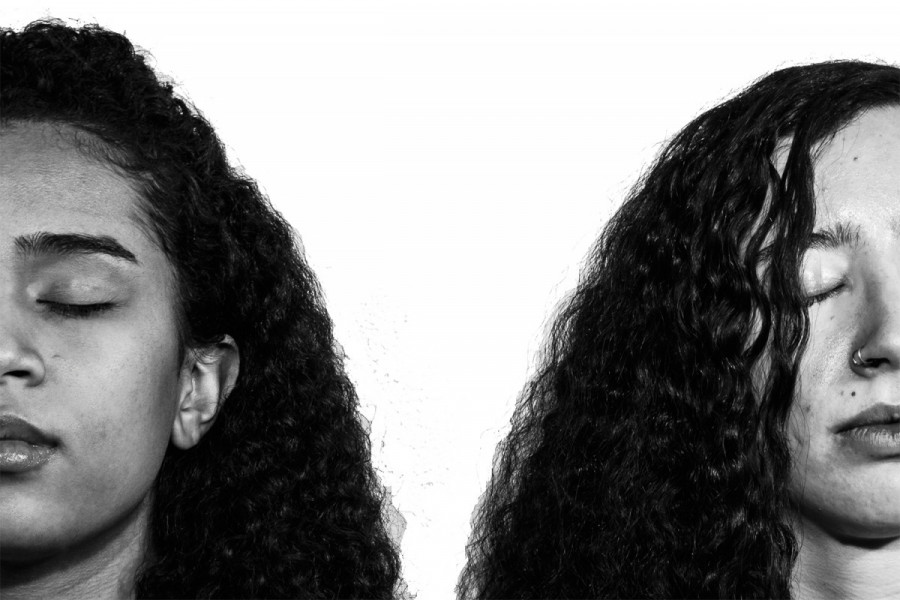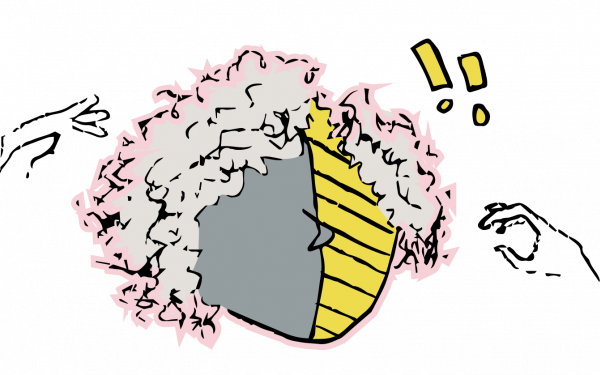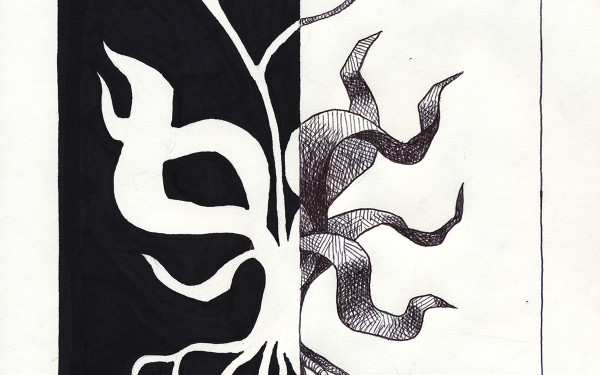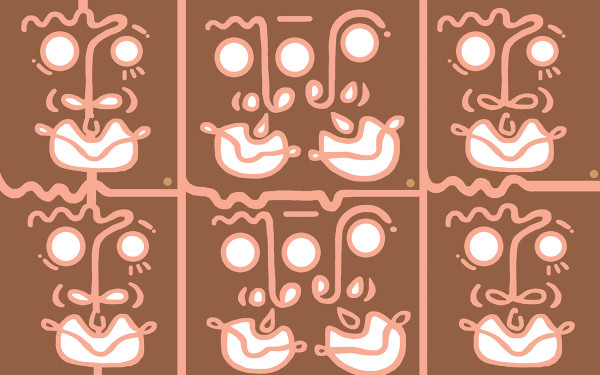For Multiracial Women, Hair Is a Political Statement
Two Women of Colour Talk About the Racialization of Their Hair
I have a weird ethnic first name (Aysha) and she has a weird ethnic last one (Ramnanan).
We are both mixed race, meaning we won’t find ourselves represented in mainstream media. In mostly white environments, such as universities, we become uncomfortably aware of how different we look from people belonging to a single race.
I gravitated towards Marissa, guessing she was also mixed because of her very curly hair.
We bonded realizing we’d both felt awkward when conversations about race came up in our journalism school. We felt like 40 pairs of eyes were fixed on us.
White women are positioned as the pinnacle of feminine beauty, whereas women of colour are “othered” and are therefore seen as less attractive. Mixed women are the other of the other, not accepted by either group.
We live in a racist, patriarchal, capitalist society that creates and profits off of women’s physical insecurities. In this context, a woman’s value is based on her appearance, and the degree to which she conforms to Eurocentric beauty standards.
Many women want to change something about their appearance, but the qualities women of colour dislike about themselves necessitate a change in DNA.
Or, corrosive creams that bleach your skin, dramatic cosmetic surgery to widen your eyes, shaving your jawbones down to make your face look smaller, relaxers that burn your scalp and break your hair.
Women of colour are forced to play respectability politics, which includes altering their appearance.
The way in which a woman of colour chooses to present her appearance is either an act of resistance or submission.
White women have the privilege of not noticing or caring as much about what they look like, in a way that women of colour simply don’t.
The most glaring example of how Marissa and I don’t fit into what is considered “beautiful” is having curly hair, which doesn’t conform to Eurocentric standards of beauty.
Straight blonde hair is the respectable standard, in contrast to curly-haired women with darker features, a symbol of hypersexualisation. However that doesn’t apply when a straight-haired woman curls her hair. Instead, it’s seen as a simple and pleasing change of appearance.
When we straighten our hair people ask us if we are Italian. It’s not a question that either of us receives otherwise. This demonstrates that curly hair is seen as an “ethnic” quality.
Society as a whole does not put much thought into why caucasian women are deemed more beautiful than racialized women; it’s just a reality. A reality that we, as racialized women, are all too familiar with.
*Marissa *
I am of mixed race.
My mother is part Bajan and part English, and my father is Trinidadian, of Indian descent.
My skin is golden brown. I have tight curls and brown eyes.
Adorning myself with the skin of the othered is something I do every time I look in the mirror. Eurocentric beauty standards are ingrained in Western society, and are an integral part of systemic racism. This is a segment of the West’s psyche—no matter what race you come from, the lighter the better. This is called colourism, and it is rampant worldwide.
People think I’m “light skin,” which is said to be privileged in the Black community. Historically, lighter skinned folk worked as house servants rather than out on the fields.These half-Black, half-white servants, called Mulattos stemming from the latin word for mule, were the offspring of white masters and African slaves, and reportedly received better treatment.
In present time, lighter skinned Black folk are often seen as privileged—the closer one is to having caucasian features, the more likely to be accepted by social institutions.
I also get mistaken for an afro-latina, or middle-eastern because of my last name. My ambiguity seems to be a game to some people. Something people constantly ask me about, even upon first meeting. I get it virtually everywhere I go.
We do not have contact with my grandfather’s family on my mother’s side, so growing up looking Black with no Black family was a struggle.
My mother perms and straightens her hair—she has been doing so for years. She encouraged me to do so as well, but something inside me decided against it.
I’ve kept my hair natural for most of my life, except I hardly ever wear it out. I always have it in a braid, a bun, or up in a ponytail. This act of constantly trying to make myself smaller, more manageable, more acceptable screams volumes of the effects Eurocentric beauty standards have on racialized people.
Until my last year of CEGEP, I would only get compliments on my hair whenever I straightened it. I was told I “should wear it that way more often,” and I “look beautiful like that.” It was detrimental to my journey, so now I rarely ever do it.
I have some family on my mother’s side whose Blackness is so minute they have blonde hair and clear blue eyes. White-passing. So, basically white, with all the privilege that comes with it. And the ignorance.
I have people in my own family whose skin crawls when they think to introduce us, the literal Black sheep of the family, to their purebred Italian side.
So we haven’t met them yet, and probably never will. We don’t get invited to Christmas dinner anymore, because their newfound relationship with the inlaws unearthed their unspoken shame of their Blackness. Of my Blackness. Of me.
On my Indian side I get a similar treatment. I remember overhearing a conversation with an elder in the family, asking if I still looked like a negro’s child. My hair being more unruly than my brother’s, thus making me look more Black than him.
Even if you are from a minority race or religion, that does not exempt you from racist thoughts or predispositions. Having people of a minority race in your family does not give you any exemption from it either.
*Aysha *
I am seven and everyone’s parents are in our first grade classroom, so we can show them what we’ve learned this year.
My mother has curly black hair. It’s imposing and impossible not to notice.
She came from work, wearing a red skirt suit. You can see the gold hoops glinting through her hair.
The other mothers don’t have to work. They’re wearing pastel sweaters and slacks. They have tasteful pearls and short ashy blonde hair as a rule.
Suddenly I’m aware of how different she is. And how I, a part of her, must be the same.
My mother is Pakistani and my father is Irish. I have pale olive-toned skin. My eyes are dark and hooded.
I benefit from white-passing privilege but I believed, as a child, that it would be impossible for a woman who looked like me to be as beautiful as a blue-eyed blonde.
I’ve oscillated between wanting to appear brown or white. During the first part of high school, I lightened and straightened my hair. For the remainder I wore it curly; I became obsessed with self tanner and giant hoops.
I’ve had a succession of blonde best friends. I’m always cast as the bitchy brunette in contrast to the bubbly blonde, regardless of our actual personalities.
Being mixed race has made me uncomfortably conscious of my appearance.
I look like a brown Barbie, identifiable as exotic but palatable enough for a suburban shopper to toss in their cart.
I have a giant mass of dark, curly hair. White women regularly ask me “how” I brush it. White men regularly tell me it would look “better” if I straightened it. Both like to touch it without asking.
If you see “curls” on the red carpet, they’ve probably been created with heat styling tools on straight hair. Magazine articles claiming to instruct the reader on curly hair care include pictures of those same “curls.”
Before hair straightening irons were invented, women used household irons to smooth undesirable curls into submission.
I remember being eight years old, lying stiffly on the floor at my maternal grandparents’ house as my older cousin passed the iron over my hair, spread out, half curly, half straightened.
I remember my body tensing as she reached roots, especially the spots near my ears.
And then there was a sizzling sound. She burned my ear. But we kept going. There was an ugly, painful, yellow blister the next day but I didn’t care because my beautiful new hair hid it from sight.
My paternal grandparents are divorced. Through my Norwegian step-grandmother, I have four older, blonder step-cousins.
Three of them are girls, whose names all start with S. Growing up, I was envious of them. They were often complimented for their blonde hair and blue eyes.
I was bothered that they looked more like my grandfather than I did.
I remember Christmas when I was six. I was so excited to receive the same present as them. It was a “big girl” present: a talking, eating, cooing baby doll.
At first, I felt included and excited to feed the little baby who I called Annabel—a non-weird, non-ethnic, non-Aysha name.
As I watched my cousins play with their dolls a prickly feeling started to run up my arms.
These dolls looked exactly like my cousins, with their round blue eyes and silky blonde hair. I felt as though I wasn’t supposed to be there, that I was wrong, and yucky.
I thought that if the way I looked was right, or even okay there might be a doll confirming that to me, as the other Annabels confirmed that to my cousins.
That was the first time I can recall experiencing a feeling that would follow me through my life: being an ugly brown duckling surrounded by pristine blonde swans.


_600_832_s.png)



